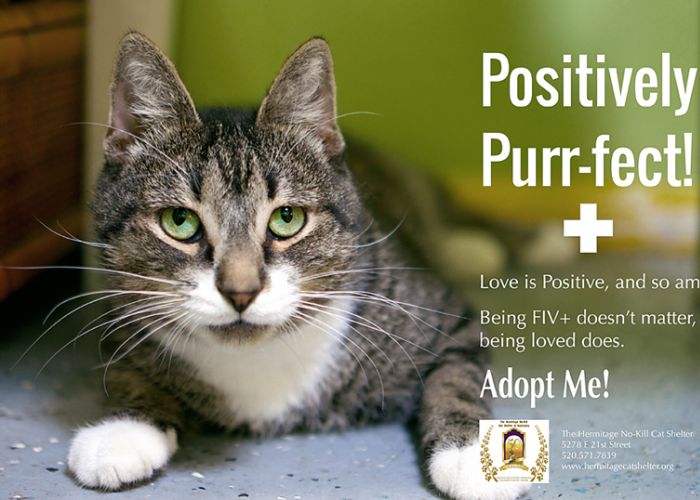Crunching the numbers
Faunalytics founder Che Green explains how data can boost shelters’ effectiveness

Last year, the Maryland SPCA faced a 10-pound challenge named Lilly. The newly arrived cat was stressed out and aggressive with shelter workers. After nearly three weeks, her behavior showed no improvement, and her chance at adoption was slipping away.
Enter Cat Pawsitive, a program created by the Jackson Galaxy Foundation that uses clicker training and rewards to socialize cats. Shelter staff worked with Lilly over 19 training sessions involving different forms of interaction and various rewards such as play, petting and food. During each session, Lilly continued to show progress, according to an account on the foundation’s website. She was adopted 28 days after starting the training.
Was this proof-of-concept for the nascent program? Or was Lilly a happy exception who responded particularly well to training?
To answer that question, my nonprofit research organization, Faunalytics, which works to increase the effectiveness of animal advocates, helped the Jackson Galaxy Foundation conduct a pilot study that compared cats who received the Cat Pawsitive training with those who hadn’t. The results not only helped the foundation focus on the right metrics, but also showed a promising difference in length of stay for cats. One shelter reduced the length of stay by more than half for cats who took part in the training.
This is the power of research. In the animal sheltering world, it’s easy to fall into old and familiar ways of doing things. But there are creative programs being developed to increase adoptions and live outcomes. Research is helping us identify and validate successful programs—whether they’re new training strategies, adoption promotions or public relations campaigns.
Other types of research are tackling the broader questions that affect our work. Academic studies are providing new insights into the human-animal bond, while opinion surveys reveal trends in public attitudes toward spay/neuter and other pet-related issues.
But if you’re not paying attention to the wealth of research in our evolving field, if you’re not analyzing your own data to pinpoint your biggest challenges, you’re missing out on information that can help guide your decisions, shape your programs and make you more effective in fulfilling your mission.

Entering the matrix
It takes a village to save a shelter animal; the welfare of companion animals is a community responsibility. It’s important for shelters to closely track their own data and also view that work in the context of what other shelters are doing and what pet owners are thinking.
If data collection hasn’t been a high priority for your organization, you should start by tracking at least the most important data, including source of intake and outcome for each animal, as well as age and gender. The main sources of intake are typically strays, owner-relinquished animals and transfers. The main outcomes usually include adoptions, returns to owners, returns to the field and transfers. You should also track animals who die, are lost while in care or are euthanized.
Together, these types of data make up what is called the basic data matrix recommended by Shelter Animals Count. Building from the Asilomar Accords (a system developed in 2004 to standardize the way shelters track their live-release rates), Shelter Animals Count is a partnership between major animal welfare organizations (including The HSUS) that encourages standardizing shelter data and increasing transparency. This helps shelter managers see their organizations’ performance in a broader context.
After launching in late 2015, Shelter Animals Count ended 2016 with more than 4,000 organizations participating from every state in the country. As more shelters participate, the tool will become even more powerful. Collecting and using your own shelter’s data can help you become more effective and efficient at saving animals. Combining that information with data from other shelters in your region (or even nationally) can be game-changing. Sharing data reveals differences within a region, for example, which can help transport programs deliver animals to where they’re most in demand.
But your animal shelter is also unique in many ways, and so is the community that you serve. Thankfully, you can use research to explore clients’ perceptions and behaviors and use that information to try new approaches. For instance, Faunalytics has helped shelters conduct community surveys to understand people’s barriers to adopting from their local shelter.
Of course, a community survey is just one starting point. A more involved effort could include personal interviews or focus groups with potential adopters or with people who have had to relinquish animals. An example of an even more in-depth exercise is the one conducted by the HSUS Pets for Life program, which has collected information from over 66,000 pet guardians in underserved communities throughout the U.S. The results have been used to reach people and pets in poverty in respectful and effective ways.
In the end, it’s about figuring out what works best to help shelter animals. Getting feedback from the people you serve is essential, whether it’s through a quick survey or a bigger effort. As shelter workers and animal advocates, you live and breathe animal welfare, but the people you’re trying to engage do not. You need research to help find the best ways to communicate with them.
The message matters
Perception is important, and the messages you choose in your advocacy for shelter animals can mean the difference between success and failure. Fortunately, national animal groups and research-focused organizations conduct studies and share results on important topics like the public’s knowledge of companion animal issues, support for stricter laws and perceptions of spay/neuter and other issues.
The Faunalytics Animal Tracker is an annual survey of animal protection issues that includes several questions about companion animals. We ask a representative sample of U.S. adults about their knowledge of pets and related issues, how important they think it is to protect companion animals and how many of them have adopted an animal in the past year.
We know from the Animal Tracker that two-thirds of U.S. adults (68 percent) feel “very” or “somewhat” knowledgeable about animals kept as companions. But only 44 percent describe themselves as similarly knowledgeable about animals in shelters. People are more likely to say that they are “not very” or “not at all” familiar with shelter animals. Despite this lack of knowledge, 75 percent of U.S. adults believe that animal protection is an important consideration when getting a new pet.
Moreover, there’s very little difference when it comes to support for protecting companion animals in homes and those in shelters. A clear majority of U.S. adults (85 percent) believe that the welfare and protection of animals in shelters is important. This is statistically the same proportion (87 percent) that believes the welfare of animals kept as companions or pets is important.
The Animal Tracker also addresses several human behaviors related to companion animals. In 2014, we found that 8 percent of U.S. adults reported having adopted an animal in the past year. In the same survey, 6 percent reported having purchased an animal in the past year. One-quarter of respondents said they had adopted an animal from a shelter at some point in the past because of their concern for animals. Nearly half (48 percent) said their concern for animals had caused them to spay or neuter a pet.
The Animal Tracker also provides information about how many people donate to and volunteer for animal advocacy groups, and addresses a variety of tactics used by animal welfare organizations, including anti-cruelty investigations and humane education.
How can you use this kind of information for your shelter? Dive into the details to see how the results differ for your target audience based on age, gender or education level. Use the research to guide your decisions about which programs and tactics might be most welcome in your community. Collect local data on recent animal adoption and purchase behavior, and benchmark the results against national figures. The possibilities are many.
One prominent example of a detailed messaging study is the spay/neuter research conducted following Hurricane Katrina in 2005. The study, led by The HSUS and supported by Maddie’s Fund, focused on Louisiana and Mississippi—two states identified as having limited animal sheltering infrastructures combined with large homeless pet populations.
The Gulf Coast Spay/Neuter Project collected a variety of data. Researchers conducted a census of shelter animal intake in the two states and held focus groups with community members to understand perceptions, motivations and barriers relating to spay/neuter. They also conducted large-scale, representative surveys to create an “inventory” of people with pets and to gauge reactions to potential messages encouraging spay/neuter.
In brief, the research found that spay/neuter messaging should address the “trust barrier” by demonstrating professionalism. Serious messages that focus on euthanasia resulting from overpopulation are better than messages that focus on cost. Having veterinarians speak about spay/neuter was more effective than using celebrities. Funny or cute themes should be avoided, and any statistics used should be as local as possible.
For anyone working to promote spay/neuter, these are powerful insights. And while the research may be specific to Louisiana and Mississippi, the findings can be used to guide advocacy in other states or regions. Thanks to research, The HSUS and Maddie’s Fund got feedback directly from the people they’re trying to persuade, ensuring that the messages were effective and would resonate with the target audience.

Ivory tower insights
Academics also study companion animal issues, including topics ranging from cage enrichment to common diseases to the human-animal bond. In the Faunalytics research library, we summarize hundreds of academic studies and interpret their results for companion animal advocates.
For instance, a recent article from The Veterinary Journal showed that many animal shelter workers are unable to correctly identify “pit pulls” based on appearance. The results have important implications for shelter intake policies and breed-labeling practices. Other recent studies have focused on dog stress during shelter stays or veterinary visits.
Does your shelter handle fearful cats? A recent study in Applied Animal Behavior Science shows that cats need at least 48 hours to acclimate to the shelter environment after intake, before being introduced to other cats. And if your shelter has obese cats, you’re not alone. A recent journal article found that as many as 63 percent of cats are obese. The authors also provide practical tips for guardians to help cats reduce weight, information that shelters can use to guide their own feline feeding protocols.
Another important topic covered by research scholars is enrichment for shelter animals. For instance, several studies have underscored the importance of hiding spaces for shelter cats, including providing “hiding boxes.” Additionally, research shows that dogs and cats who are provided more space are less likely to engage in repetitive abnormal behaviors, such as pacing or excessive self-grooming. Increasing interaction with shelter staff is also consistently shown to reduce animal stress and increase likelihood of adoption.
Academic research can be a wonderful source of learning for the animal sheltering community. To stay up to date on the latest studies, check the Faunalytics library and other resources like Animal Sheltering magazine and ASPCApro.
Getting started
It’s a wide world of research out there, and it can be daunting. Especially if you work at a small animal shelter, you may not have the resources to evaluate your programs. Fortunately, there is some low-hanging research fruit to get you started. Don’t reinvent the wheel. Learn from the larger shelters and national animal welfare groups and academics who have come before. Begin by focusing on three areas:
- Track your data closely, using standard definitions. See the “basic data matrix” mentioned earlier and implement it or something similar. And even if you’ve never shared data before, you can join Shelter Animals Count.
- Listen to your clients. Adopter surveys, occasional interviews or even an informal focus group can shed a lot of light on how people perceive your shelter or specific facets of your operations, such as your adoption process.
- Start small with program evaluation. Learning what works (and what doesn’t) can be complicated. Enlist the experts when needed.
What does it mean to “start small” when evaluating your efforts for animals? Consider picking just one element of a program and evaluating that piece before attempting to measure the entire program. Rather than doing everything from scratch, borrow materials like evaluation plans and survey instruments from other shelters and research groups. Begin with pilot studies and smaller sample sizes to limit your investment in data collection.
We owe it to shelter animals to figure out the best ways to help them using our limited resources. As advocates, we sometimes balk at diverting money and other resources from direct animal care. But investing our time and energy (and even money) in research can make us more effective and efficient at saving lives.
The Jackson Galaxy Foundation’s Cat Pawsitive team would agree. “We used the research results to retool the program to make it more effective and user-friendly,” says program manager Christie Rogero. “We expect to have a much bigger impact on the cats (and shelter staff and volunteers) during the 2017 class of Cat Pawsitive.”
How will your shelter use research to save more animals?







